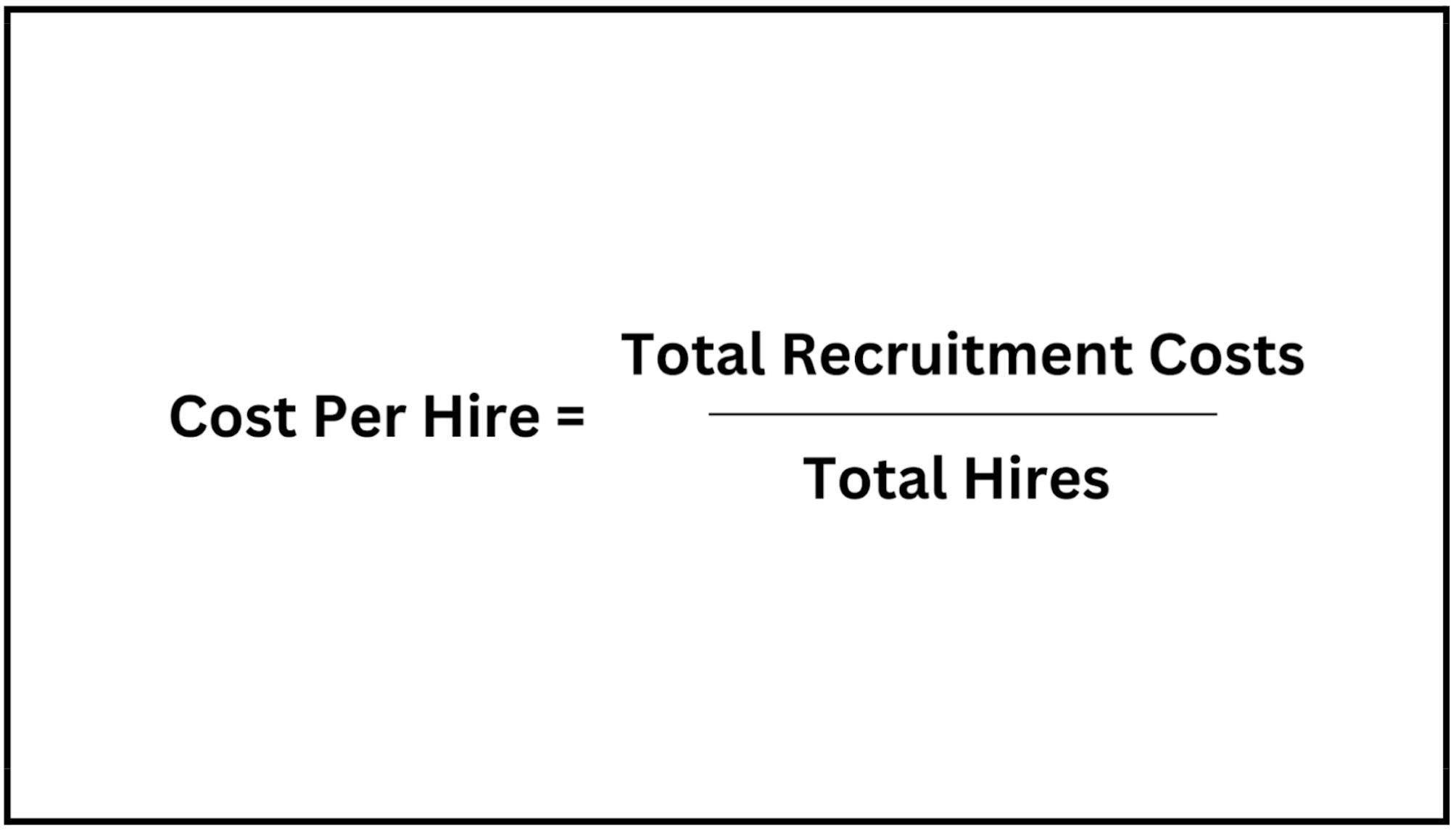Reducing cost per hire is absolutely essential for startups with very tight budget constraints.
The average cost per hire was $4,129 in 2019 but rose to $4,700 in 2023, which is a 14% increase.
This isn’t sustainable, especially for startups that need to compete against big tech companies for the most in-demand talent.
The cost of hiring an employee is often higher for certain positions experiencing talent shortages.
For instance, hiring developers can cost up to $35,000 per hire.
What we’ve discovered (after helping dozens of businesses hire developers) is that there are plenty of ways for you to optimize this cost while maintaining quality.
If you want to reach the most talented professionals in the market without breaking the bank, you’ll need to get creative, and that’s exactly what we’ve been doing.
Cost per hire calculates the average amount spent on recruiting each new employee and includes both internal and external expenses.
At Remote Crew, we’re very mindful of this metric.
When supporting companies with their hiring efforts, we’re trying to keep cost per hire as low as possible.
Many HR teams assume that this comes at the expense of reaching truly exceptional candidates, but this isn’t true.
Over the years, we’ve learned a few tricks that allow us to keep costs under control while still tapping into a treasure trove of talent.
Before we talk about some of these tricks to reduce cost per hire, let’s just briefly summarize what this metric is and how it’s typically calculated.
What Is Cost Per Hire?
Cost per hire is the average total cost associated with recruiting a new employee.
For our clients, this metric usually includes advertising expenses, agency fees, onboarding costs, and recruiter salaries.
Reducing CPH yields long-term benefits, such as better return on investment (ROI), higher operational efficiency, and improved overall talent acquisition strategies.
How To Calculate Cost Per Hire
The formula for calculating cost per hire is the total recruitment costs divided by the total hires.
Here’s a useful graphic that illustrates this equation:

As we briefly mentioned at the start of this article, recruiting for certain in-demand roles may prove more expensive than hiring for others.
It’s the nature of the free market.
Here are just some of the expenses that get factored into this calculation:
- Paid promotions on job boards, social media, or other platforms.
- Costs of outsourcing recruitment services.
- Costs for training sessions, materials, and other new-hire onboarding essentials.
If you are a nimble startup, there are cost-saving opportunities in all of these areas.
For instance, bootstrapped startups typically don’t have the budgets to spend big on job boards or lavish social media campaigns.
Instead, they may leverage the contacts of a recruiting agency like Remote Crew, along with our on-the-ground knowledge, to tap into a large talent pool.
There are workarounds for pretty much every expense you may encounter when hiring a professional, and our team will help you find them.
6 No-Brainer Ways To Reduce Cost Per Hire (Tried & Tested)
Implementing specific strategies can help startups reduce CPH without impacting the quality of new hires.
It’s not a trade-off. You can find high-quality hires without sky-high costs.
Each of the following methods offers actionable steps to streamline the hiring process and optimize recruitment budgets.
1 - Employee Referral Programs
Employee referral programs are an efficient way to lower recruitment costs while attracting candidates likely to fit well with company culture.
Current employees can refer suitable candidates from their network, leading to faster recruitment timelines and often reduced spending on job ads.
Referral programs frequently result in higher employee retention, saving on costs associated with future recruitment efforts.
This approach can be especially useful for startups or smaller teams seeking talent.
2 - Use Recruitment Technology
Adopting recruitment technology such as Applicant Tracking Systems (ATS) and automation tools can have a significant impact on CPH.
Recruitment software can simplify tasks like CV sorting, interview scheduling, and follow-up communications, reducing manual work.
Automating these tasks allows HR teams to focus more on candidate assessment, resulting in a more cost-effective hiring process.
3 - Optimize Job Advertising
A carefully planned approach to job advertising can cut recruitment costs substantially.
Researching the most effective channels for your target audience helps avoid unnecessary spending on broad job boards.
Niche platforms or industry-specific job boards often bring better candidates with lower ad spend.
4 - Promote Internal Hiring
Promoting internal hiring not only saves money on recruitment advertising but also strengthens employee engagement.
Developing a culture that values growth from within can help fill vacancies quickly and efficiently.
Offering training and development programs keeps current employees engaged, reducing the need for frequent external hires.
Internal hiring is particularly effective for organizations with high retention, as existing employees are already aligned with company values and processes.
5 - Use External Resources Efficiently
When it comes to scaling or project-specific recruitment, partnering with agencies or using freelancers can be a cost-effective solution.
Remote Crew provides companies with access to vetted remote professionals.
Flexible hiring solutions can help businesses remain agile in fluctuating market conditions, filling roles quickly and within budget.
6 - Improve Candidate Experiences
A positive candidate experience can greatly impact hiring outcomes and reduce costs.
Candidates who experience smooth, efficient processes are more likely to accept job offers, reducing the time and resources spent on filling roles.
Ensuring consistent, transparent communication throughout the hiring journey helps maintain candidate interest and enhances employer branding.
Our team at Remote Crew can work with you on simplifying the candidate experience.
This allows startups to attract high-quality talent from a global pool without excessive spending.
7 - Track & Optimize Recruitment Metrics
Tracking metrics such as time-to-hire, candidate quality, and cost-per-hire provides valuable insights into recruitment performance.
Continuous tracking and analysis enable organizations to identify areas for improvement, allowing for real-time adjustments in strategy.
Keeping these metrics under review helps companies optimize each stage of the hiring process, achieving more with less expenditure.
Will Cost Per Hire Decrease In The Near Future?
We can’t see this happening. In fact, it may increase.
Why? Because the competition among tech companies to higher the best and the brightest has never been greater, and this is driving up recruitment costs.
However, it doesn’t have to be this way.
When you partner with Remote Crew, you are getting access to experienced recruiters with a wealth of professional connections and on-the-ground expertise.
They know what it takes to get in-demand tech professionals to sign on the dotted line and join your team.
This can all happen without breaking the bank.
Let’s talk about how Remote Crew can help you hire in-demand tech talent.
Tech hiring insights in your inbox
From engineers to engineers: helping founders and engineering leaders hire technical talent.
We will only ever send you relevant content. Unsubscribe anytime.







